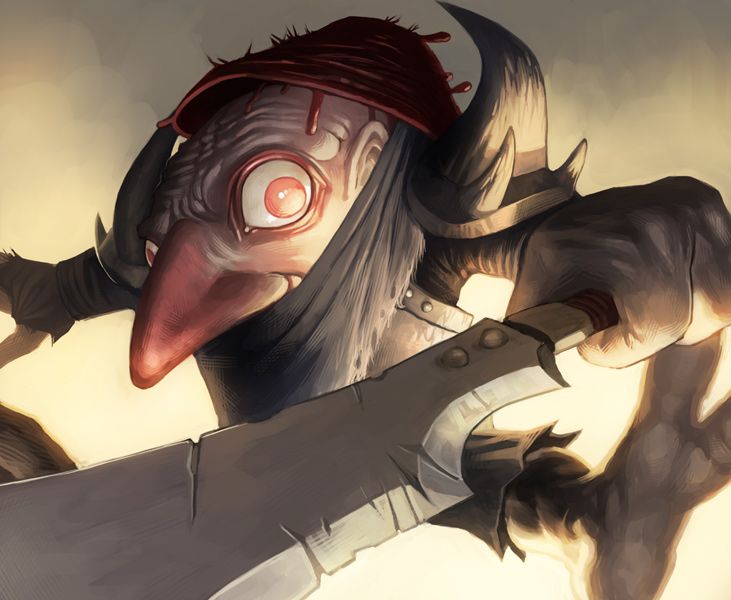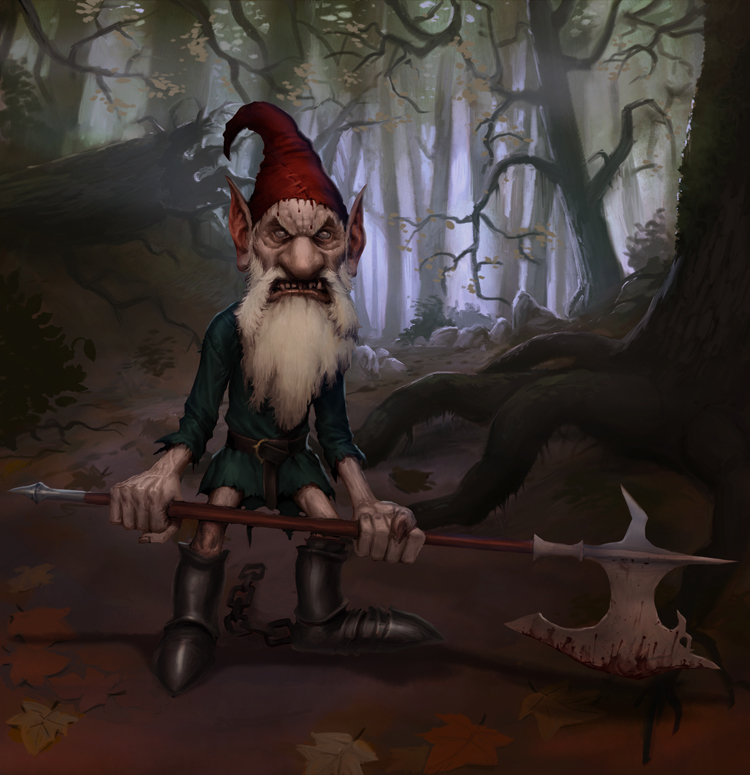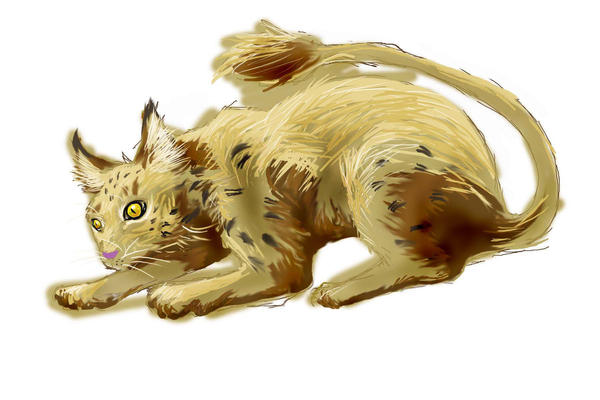By UdonCrew on DeviantArt
The creature I will be journaling about today is the Redcap. Redcaps are between three and four feet in height and have grey skin with a greenish tinge and red eyes. They live anywhere that blood has been shed. Battle fields, places of tragedies, dungeons, anywhere blood has touched the Earth. The Forest of Dean and the Forbidden Forest here at Hogwarts both have Redcaps. Redcaps attack and feed on humans, using clubs or bones from their past victims to kill them. A darker red hat on a Redcap means they have made more kills. This is because Redcaps put a little blood from each victim on their hat. Mating occurs in March with birthing in August. Attraction is done by males showing females how dark their caps are and the number of bones they have from victims. Babies are called sma demonor, meaning Little Demon in Swedish. Redcaps travel in groups so offspring stay with the parents. Redcaps are very dangerous to Muggles. Wizards and witches can use the Knockback Jinx, Stunning Charm, Full Body Bind, or Immobilizing Charm to protect themselves and get away. A Beautification Potion can also be thrown on the Redcap which will distract them and give you time to escape.
The first time I encountered a Redcap was during a tour of Normandy Beach and Pointe du Hoc in France. I was wandering away from the group to look at one of the buildings farther away from the main tourist area. As I was walking through the long grass around the structure, I heard rustling in the tall grass. Turning, I ducked just in time to avoid being hit in the head by a Redcap with a bone in its hands. Startled, I stumbled backward and felt my back hit the structure behind me. Scrambling for my wand, I ran through the spells I could do to save myself. Luckily it was just one Redcap and not a whole group of them. Noting the relatively light red of this Redcaps cap, I knew I would not need a severe spell. Pulling the Stunning Charm from my box of tricks, I cast it on the Redcap as he ran at me with the bone in the air. With a small 'Eep!' of surprise, the Redcap fell over backwards and I scampered back to the main group.
All images found from Google Images and are property of their respective artists.








